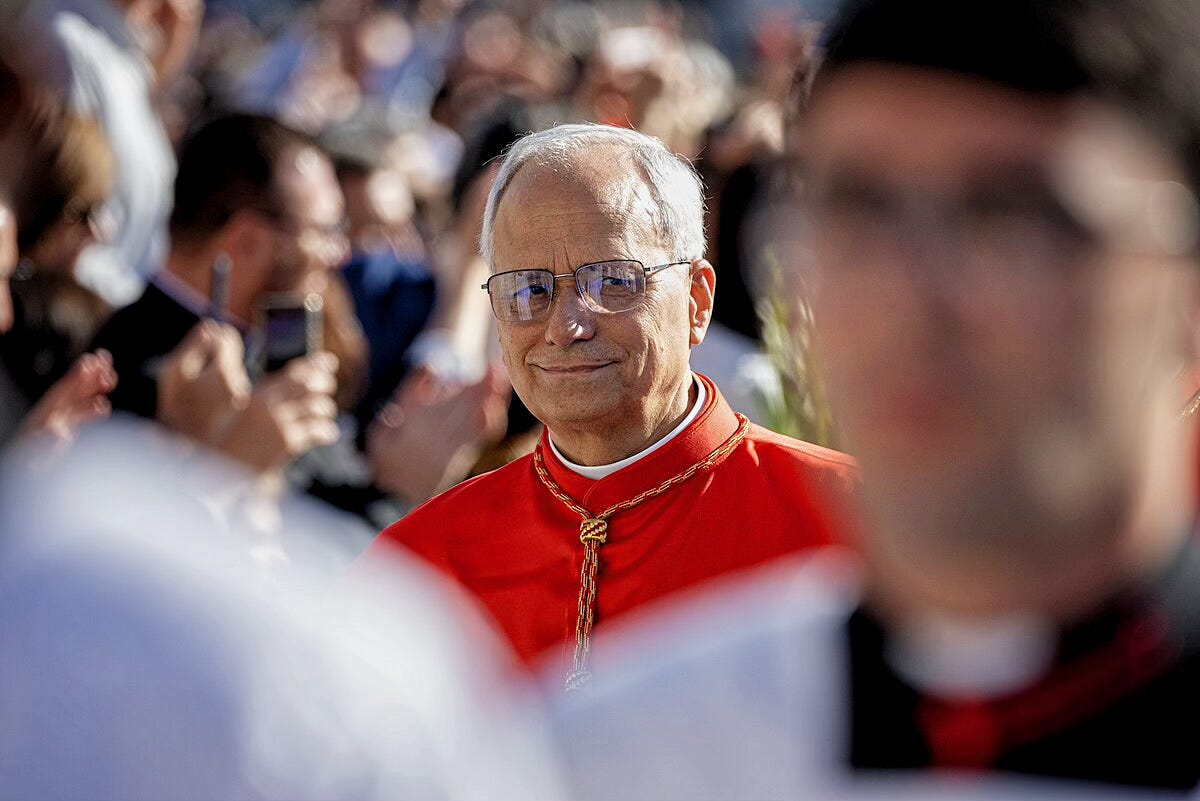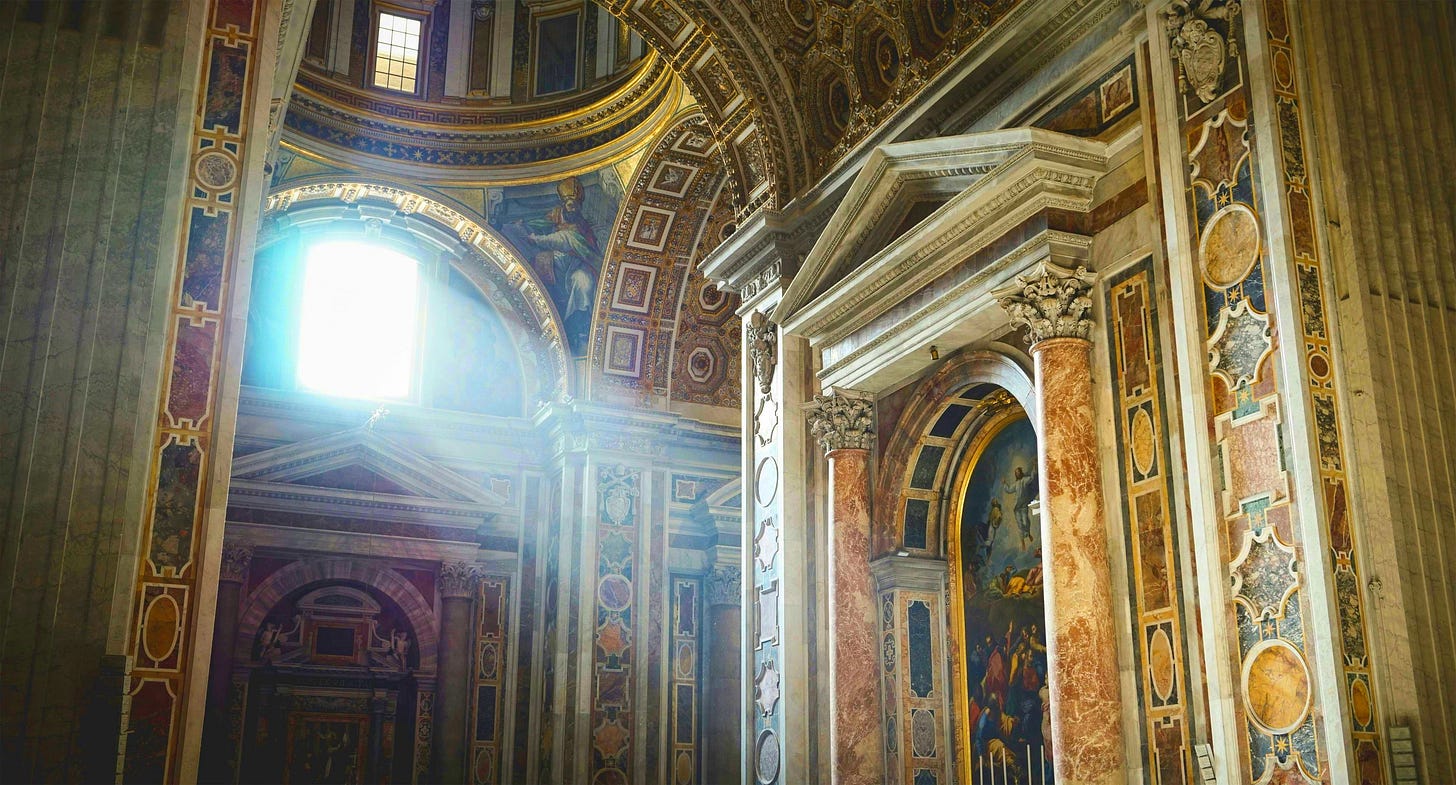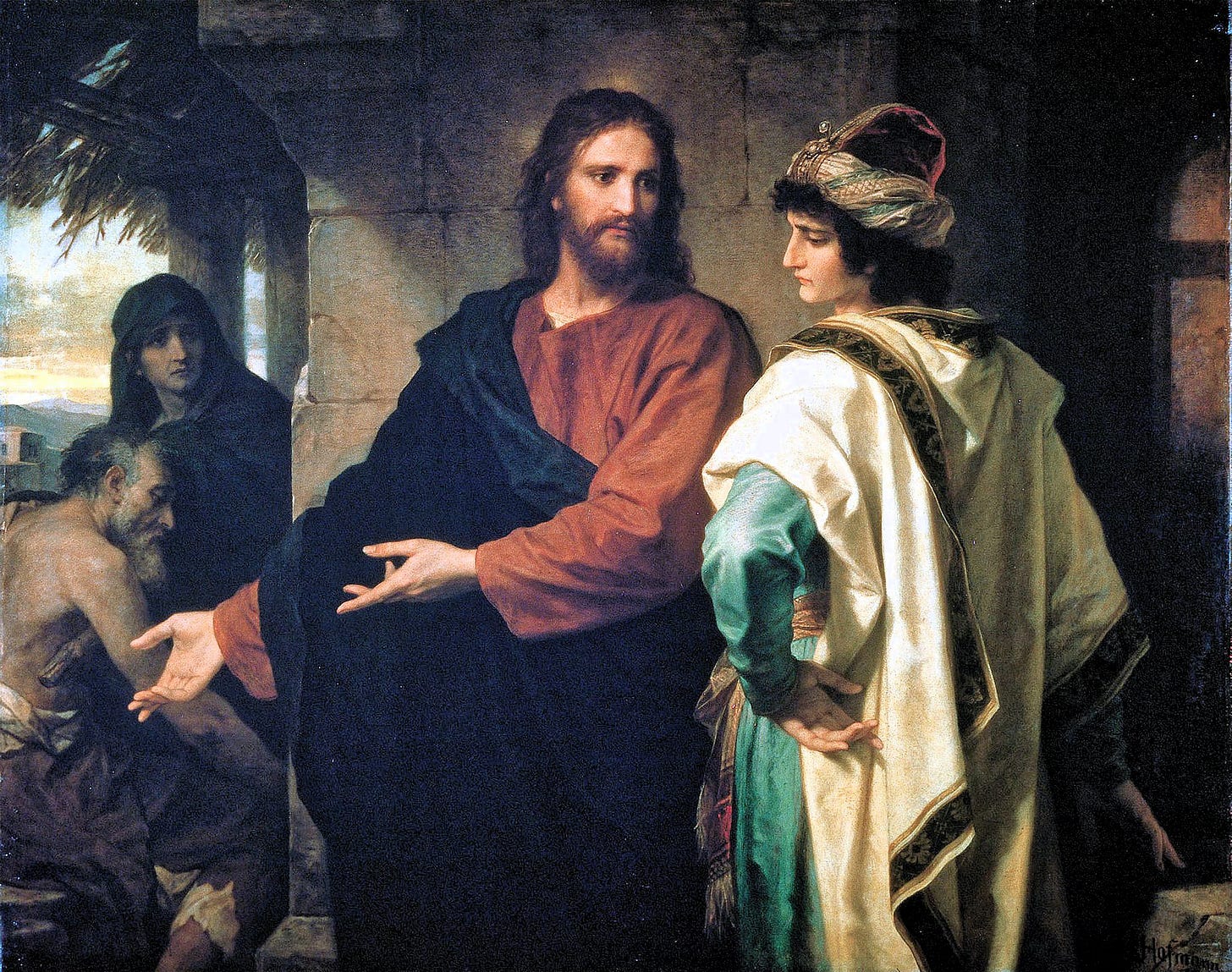Can Pope Leo Lead the Fabulously Rich Catholic Church through the Eye of the Needle?
Liquidating the vast holdings of the Church to feed the poor may seem like a good idea in a movie. But the reality is far more complicated.

Even before Pope Leo XIV’s inauguration, TV’s talking heads had already begun to ask how he would handle the many serious issues facing the Church today. Will he speak out about the worldwide migration crisis, which has led to the forced displacement of 117.3 million people around the world — more than at any other time in modern history?
How will he address the wars in Gaza, Sudan, and Ukraine? What will he do about gays, women, the transgendered, and the many thousands who were sexually abused by Catholic clergy? So many questions.
But there is one question that hovers in the background no matter who winds up waving from the popemobile. How come the church doesn’t sell its vast wealth and give it to the poor like Jesus said?
No doubt you’ve heard the story
The one about the rich young man who asked Jesus what he needed to do to gain eternal life. Jesus told him to keep the commandments, and the young man said he already did that. So Jesus gave him this advice: Sell all your possessions, give everything to the poor, and come follow Me.
This was not the answer that wealthy young man wanted to hear, and he walked away sad. That’s when Jesus dropped one of the most famous quotes of the New Testament: “It’s easier for a camel to go through the eye of a needle than for a rich man to enter the kingdom of God.”
The term “eye of the needle” was not original to the Gospels of Matthew, Mark, and Luke. It can also be found in the Talmud and the Quran. But it’s that New Testament story about the rich man and the camel that most Christians know about today. It’s also the one that boomerangs back on the Vatican from time to time. And for good reason. The wealth of the Catholic Church is incalculable.
So where did all that cheddar come from?
The Church first began to get rich during the final phase of the Roman Empire when Constantine the Great and his successors provided political and economic support, which helped the church grow. But after the fall of the Roman Empire in the 5th century, chaos became the new normal. Wars broke out all over Europe, and the Church emerged as a stabilizing presence.
As its influence and status increased, so did donations from rich patrons. With increased wealth came increased power. The Church began to charge fees for sacraments like Baptism and marriage. Then it levied tithes—the so-called “church tax” enforced by civil authorities — which required all Catholics to pay 10% of their income every year to the Church. Failure to pay meant excommunication and/or other punishments.
With the power to say whether you went to heaven or hell, the Catholic Church maintained a chokehold on the secular mind, which lasted for centuries. Although local priests were usually poor, the pontiffs lived in luxury.
Take Pope Alexander VI of the extravagantly wealthy Borgia family, for instance. A ruthless politician known for nepotism and bribery, he may not have been quite as evil as the historically inaccurate Showtime TV series suggests, but he was far from good. Three centuries after celibacy became mandatory for priests, he had multiple mistresses and fathered four children while serving as pope (including the intriguing Lucretia Borgia, now immortalized in a Donizetti opera, a play by Victor Hugo, and countless other stories).
The TV series did get one thing right—the real Pope Alexander VI did use his papacy to lavish wealth, land, and titles on his family. A thoroughly corrupt and immoral man, he basically leveraged the power of the Church to manipulate alliances, increase his wealth, and empower the Borgias.
But all of that happened more than a thousand years ago
The Catholic Church of the Middle Ages and the Renaissance is not the church of today. Two important events forced it to change—the Protestant Reformation and the Council of Trent, which initiated long overdue and much needed reforms in what’s been called a “counter-reformation.”
Among other things, the Council of Trent put an end to the buying and selling of indulgences and established strict disciplinary procedures for any clergy that did not abide by the reforms.
But there’s one thing the Council of Trent did not do—sell everything the Church owned and give the proceeds to the poor.
Fast forward to 1968
That was the year Anthony Quinn played the first Russian to become head of the Catholic Church in The Shoes of the Fisherman, based on the novel by Morris West. But the end of the film is radically different from the book. Faced with famine and the possibility of World War III, Quinn’s Pope Kiral announces that he will liquidate the church’s vast wealth and give everything to the poor as Jesus instructed.
The reworking of his novel angered Morris West so much that he disavowed the film and had his name removed from the credits. A former member of the Christian Brothers, he felt the filmmakers gave a false idea of what his novel is about and how the Vatican works.
So how rich is the Church—and what can the Pope do with all that wealth?
The actual figure is impossible to calculate because there is no one spreadsheet that covers everything since the church began centuries ago. Today’s assets include 250-500 thousand square miles of land worldwide, upon which sit thousands of buildings filled with expensive art, vestments, and sacred vessels. In addition to all this patrimony, it gets lots of additional revenue from investments and donations.
But like other pontiffs of the modern era, Pope Leo XIV does not control all of that. Why not? Because the Catholic Church is a theological hierarchy—not a financial one. The institution includes about 2800 individual dioceses throughout the world, all entirely decentralized from the Vatican.
Some are very wealthy like the Archdiocese of Cologne, whose net worth was around 3.35 billion euros ($3.82 billion) in 2015, making it richer than the Vatican. But many other smaller dioceses are far more missionary in nature. They hold few assets and may also carry considerable debt.
The pope has no direct financial control over these other dioceses
But he does control the Vatican’s wealth, which includes all the art, ancient artifacts, sacred vessels used in religious rites, and the buildings. By its own estimate, that comes to about $1.6 billion.
If Pope Leo XIV decided to sell everything in the Vatican—and the 2800 dioceses around the world sold their assets too—Father Casey, an Augustinian priest who operates the Breaking the Habit YouTube channel, estimates that the total could run anywhere from $50 billion to $1 trillion. Which sounds like quite a lot of money—until you realize that the United States spends that amount on Social Security every year.
Father Casey argues that if the Church sold everything, that divestiture would not do as much for the poor annually as the church is able to do today.
“And look at all the world would lose if it did,” he says. “Besides the spiritual wonder of gorgeous cathedrals and the comfort of religious ceremonies, let’s not forget that the assets of the Catholic Church allow it to be the largest charitable organization in the world, providing priceless services to the most desperate.”
But it was Pope Francis who perhaps gave the best response in 2015 when he was asked if he ever felt pressure to sell the treasures of the Church.
This is an easy question. They are not the treasures of the Church, (but) the treasures of humanity. For example, if tomorrow I say that Michelangelo's Pieta is going to be auctioned, it can't be done, because it's not the property of the Church. It's inside a Church, but it belongs to humanity. And this is true for all the treasures of the Church.
—Pope Francis, in an interview with Straatnieuws, published by the homeless of the Dutch city Utrecht.
What those who ask the “eye of the needle” question don’t seem to know
is that the Vatican actually runs a deficit of $13 million dollars a year. Its annual expenditures include $76 million on the Secretariat of State, $43 million of which was sent all around the world to diplomatic missions. It sends $54 million to the Dicastery (Department) of Communications, which employs 540 people to transmit the message of the pope into 40 different languages over TV, radio, social media, print, and photography.
Another $25 million goes to the Congregation for the Evangelization of Peoples, a department that supports churches in mission territories, $19 million of which went to Eastern Rite Churches, mostly in the Middle East. $10 million goes to the Vatican Library, and $7 million goes to the Dicastery for the Promotion of Integral Human Development.
Although the Church charges 16 euros ($18.19) for basic tours, that’s cheaper than a ticket to the Natural History Museum in New York, which charges $25 General Admission and $20 for students and seniors.
But as Father Casey points out, admission to St. Peter’s Basilica is absolutely free. Which means the cost of upkeep, restorations, and employees is paid from a deficit, which the Vatican absorbs each year because it believes it’s important to preserve this history and share it with the world.

Jesus, the rich man, and the Buddha
In The Left Hand of Darkness, novelist Ursula K. Le Guin says it’s important to know what questions not to ask. When it comes to the Catholic Church, asking why it does not sell everything it owns and give to the poor—is the wrong question. And the eye of the needle is the wrong context.
The story of Jesus and the rich man resonates strongly with Buddha’s teaching about attachment. When Jesus says sell everything you own and give to the poor, He’s saying let go of your attachment to the things of this world. Buddha, for his part, teaches that suffering is caused by attachment. Therefore, to get rid of suffering, get rid of attachment.
But that rich young man in the New Testament was unwilling to do that. So he went away sad and was likely to become much sadder as long as he remained attached to possessions that could bring neither happiness nor freedom.
The eye of the needle is not meant for organizations. But for the people within them and those who hope to find therein something greater than themselves.
©2025 Andrew Jazprose Hill/All rights reserved.
Thanks for reading/listening. Please hit the like, share, and/or comment buttons to help others find my work.





This was so fascinating...It made me wonder if you were ever a theology student--(or history, generally?). As for the Anthony Quinn movie--yep, my mamacita and I watched that one, too! (But I haven't seen it in decades...)
Enjoyed this writing! So relevant.